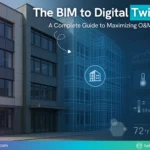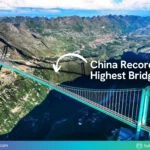What Construction Companies Must Know About Trends Like IoT And Digital Twins
August 18, 2020

Worldwide, the construction sector employs the largest workforce and is often considered to be one of the biggest drivers of the economy. In 2018 alone, the annual spending on construction worldwide was estimated to be around USD 11.4 Trillion. While most disruptions in the actual construction operations have been through the inventions or progress made in mechanical equipment and raw materials, there is a growing role being played by technology and digital transformation in propelling the sector to newer heights. From modelling projects through interactive visualization to enabling workforce safety, technology is slowly (but surely) becoming an integral part of the construction sector.
Now comes the question of what can the industry explore next with technology? We have handpicked two great options to explore further – Digital Twins and the Internet of Things (IoT).
A digital twin involves the concept of having a digital representation of a physical object created with accurate data. This digital representation supports real-time visualization of any impact the object may have when acted upon by external influence like a physical force, mechanical or chemical or electronic stimulation, or any other forms of influence.
The Internet of Things (IoT) refers to devices, or small machines, connected to the internet which allows them to be managed, analysed, and subject to activities – mechanical or electronic, from remote locations.
We’ve said it often that Building Information Modelling (BIM) has revolutionized the construction industry and paved the way for transitioning from pen and paper drawings to more efficient computer-based modelling. Bringing Digital Twins and IoT to the mainstream in this area will enable even more exciting possibilities in building or project design.
So, what are the possibilities, the construction sector must explore from trends like digital twins and IoT?
Here are 4:
Sustainable Project Planning
Using data from IoT sensors in existing projects worldwide, engineers can study the feasibility of new projects under similar environmental conditions. They can model each layer of a building based on how factors such as temperature, pressure, wind, and humidity impact the layer, with the data sourced from sensors on buildings in similar environments. This will ensure sustainable project planning and realize long-term benefits for tenants or owners of the project.
Predict Resource Requirements
Studies have shown that on average, 25% of productive time is wasted due to delays in resource handling and logistics. These delays often occur due to labour shortage, miscalculated time for material and equipment availability, and other factors that arise mainly due to improper planning. BIM helps optimize resource procurement and provisioning by enabling more precise predictions and estimates. With powerful digital twin technology, construction companies can further enhance the plan for optimum resource utilization. Based on data-driven models, engineers can create digital twins of projects to estimate the resources needed in terms of man, machine, and materials far in advance. This will also help in reducing the wastage of resources and ensure better logistics efficiency for intense demand scenarios.
Quality & Compliance Assurance
While BIM has allowed for efficient project planning in the construction sector, they have some limitations in assuring the quality assurance of a built structure or in stages during the construction. This is one area where IoT and digital twinning can make a difference though. By integrating the designed model with actual data captured by IoT sensors in the structure being constructed, it was possible to continuously analyze and monitor the progress of construction and ensure adherence to pre-defined standards. For example, an intelligent AI-enabled digital twinning platform could help in identifying cracks and intrusions in structures using image processing algorithms on data captured by IoT sensors. This information can be used to alert contractors and have them manually inspect the construction with experts. This will greatly enhance the quality and compliance of buildings and structures. Environmental and other physical compliance requirements can also be validated at every stage by modelling digital twins of the structure with real-time data generated by sensors.
Workforce Safety
Being a labour-intensive sector, the construction industry is also, unfortunately, known for being one of the most dangerous industries for the human workforce as the majority of the work involves labour in the open air and often on high rises. Digital twinning in co-ordination with IoT sensors on the building as well as in the form of wearables for workers can prove to be a huge safety aid in the workplace. Managers or supervisors can be alerted when employees work in a potentially dangerous site or when they are deployed for handling hazardous work materials. They can ensure that these workers have enough safety gear and access to safety procedures in the event of a mishap. This level of preparedness can prove to be the difference between life and death in dangerous scenarios often witnessed in large construction projects.
The construction industry stands to benefit immensely from adopting emerging trends such as digital twin and IoT. The right knowledge and selection of technology can help businesses in this space leverage great power in this way. They can build better landmarks with sustainable techniques and improve the working conditions for thousands of workers who rely on the construction sector for their livelihood.















